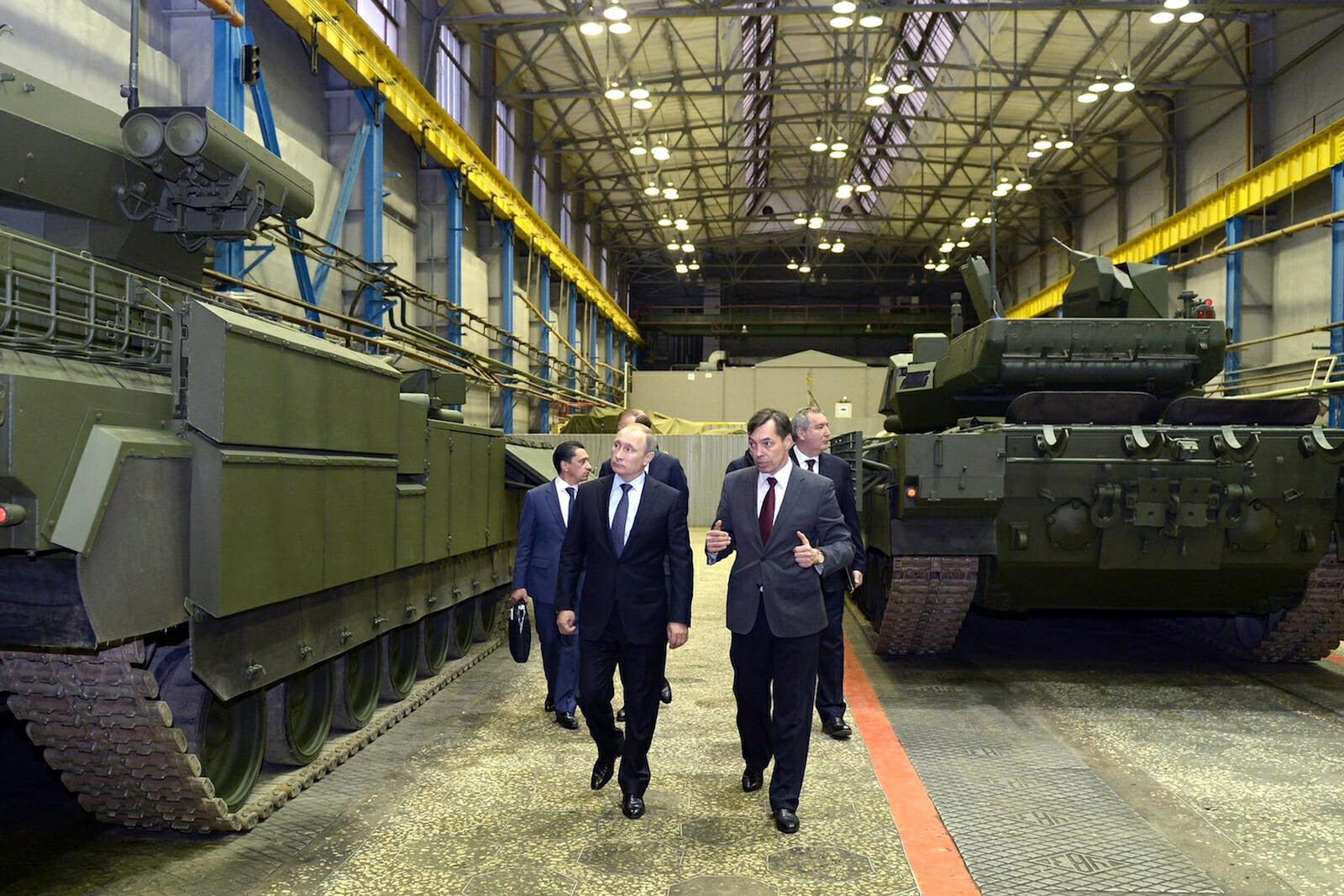
Russia Ramping up Military Spending
Russia’s Deputy Defense Minister, Vladimir Popovkin, recently announced that Russia plans to modernize its military. Russia plans to spend roughly 19 trillion rubles ($650 billion) for the purchase of fighters and bombers, helicopters, nuclear submarines and warships.
Procurement of new fighter planes, submarines, helicopters and warships based on Cold War designs strikes some as questionable due to the changing nature of new threats. In order to address new threats it is important to develop hardware and systems that were not originally designed to fight a superpower but are adaptive and posses different capacities and capabilities. Popovkin also announced that the Soviet era SS-18 Satan and SS-20 Saber ICBMs will be phased out in favor of an updated ballistic missile. In addressing the need to update the nation’s armed forces, President Medvedev told a gathering of Defense officials in 2009, “Last year we equipped a number of military units with new weaponry, and we will start large-scale rearmament of the Armed Forces in 2011.”
The modernization and procurement of new planes and warships follows a reorganization of Russia’s armed forces. The reform program, approved following the war with Georgia, will see significant changes to the overall structure of the Russian military. When completed the overall size of the armed forces will be 1 million men from the current level of 1.2 million. Additionally, “phantom” divisions, developed during the Cold War, consisting of generals but no actual troops, will be cut in favor of units that will be fully staffed. Fred Weir of the Christian Science Monitor writes, “the planned changes will slash the 355,000-strong officer corps, particularly the bloated upper ranks, by almost 150,000.”
Alexander Golts, the deputy editor of Yezhednevny Zhurnal, commented on the force modernization, “These are all designs from the late Soviet period, and not really new at all.” Golts continued by suggesting that many of the designs are from the Cold War era and points to an underlying flaw in Russia’s military industrial complex, “The lack of fresh designs shows the underlying weakness of our military-industrial complex.” Golts referenced that many of the programs being considered are the Mi-28 helicopter gunship, the Mi-26 transport helicopter and the Sukhoi Su-35 fighter jet.
These designs have been in use for decades and are not revolutionary pieces of military hardware. The current Russian inventory of fighter jets includes the Sukhoi Su-27, the Sukhoi Su-30, the Sukhoi Su-35, the Mikoyan MiG-29 and the Mikoyan MiG-31. Many of the current Russian fighter jets are decades old and the ones that have been exported to other countries have either been mothballed or discontinued in favor of American fighter jets. What is problematic for the Russian military is that by acquiring many of these jets with the same configurations and older designs, they are adding to an already antiquated inventory of fighter jets and helicopters.
Comparatively, the U.S. military has frequently updated its fighter jet capacities and capabilities. For decades the U.S. relied on F-16 Fighting Falcons, F-15E Strike Eagles, A-10 Thunderbolts and F-14 Tomcats. Over the past decade the U.S. military has begun to mothball the F-16s, F-15s and retired the F-14s in favor of F-35s and the F/A-18 Hornets. The U.S. still uses a significant number of F-15s and F-16s but these fighter planes do not constitute the bulk of U.S. fighter jet capacities. Alexander Golts speculated that the Russian military has been slow to reveal technical details of any new warplanes and if they will be comparatively similar to F-22s or F-35, in use by the U.S. armed forces, “We don’t know enough about this Russian fifth-generation fighter to tell whether it is the real thing.” Golts continued, “or if it’s just a jumped-up version of something old.”
Using the baseline comparisons of U.S. and Russian fighter jet capacities is reasonable because the U.S. and Russian/Soviet militaries have been in a race to the top since the 1950s. The Soviets eventually lost the comparative advantage to the U.S. in the 1960s and instead relied on its nuclear weapons stockpiles to remain competitive. But even then nuclear parity was reached in the 1960s. GlobalSecurity.org explains “With considerably more advantageous population and economic resources, the Soviet Union was destroyed by the effort to remain a peer competitor with the United States during the Cold War.”
Although Russia and the United States have largely put aside their aggressive positioning and posturing, Russia has made a point to flex its economic and military power around the globe. The U.S. has attempted to have the UN Security Council approve a no-fly zone over Libya to prevent Col. Muammar al-Qaddafi’s regime from using its air power to retake several rebel held areas. Dmitry Rogozin, Russia’s NATO ambassador, suggested, “a ban on the national air force or civil aviation to fly over their own territory is still a serious interference into the domestic affairs of another country.” Sergey Lavrov, Russia’s Foreign Minister suggested that pondering such a vote is “superfluous” because even if the U.S. were able get a resolution for a no-fly zone considered by the UN Security Council, Russia would ultimately veto such a resolution.
The larger problem for Russia is that it has not departed from the Cold War paradigm. By purchasing many of the same designs it is acknowledging its own deficiencies in designing warships and other material. In Russia’s force modernization plan it will purchase 2 Mistral-class amphibious assault ships from the French. Two Mistrals of French design will be constructed in Russian shipyards. The purchase illuminates a tension between the military and Soviet era defense industries. In the past, the defense industries would be able to dictate the overall arch of what the then Soviet military had at its disposal. Andrei Zolotov, Jr. of RussiaProfile.org interviewed Alexander Golts for RIA Novosti following the announcement of the deal between Russia and France. The purchase of the Mistral points to an underlying change in strategy for the Russian military.
Traditionally, the Navy was used to support Russian strategic nuclear forces typically nuclear-armed submarines. With the procurement of the Mistral this will allow the Navy to project its conventional naval forces in far off places. Alexander Golts suggested, “The Mistral is a warship designed for a different conceptual approach to naval operations. In the past, the Russian Navy was focused on supporting the strategic nuclear forces, but its current tasks include landing operations and demonstration of naval might, including at a great distance from Russian shores, as well as other operations such as fighting pirates in the Gulf of Aden.” The Russian military will be relying upon other nation’s naval designs. The Russian military will also be arming its new submarines with Bulava’s, a newly designed long-range nuclear missile. The problem with arming Russian subs with Bulava’s is that half have failed their flight tests.
These recent trends, while not necessarily alarming to U.S. military planners, are evidence of a state that is attempting to reassert its hegemony on the world stage. Presently, the U.S. spends approximately $661 billion every year on military expenditures but the total is influenced significantly by spending in Iraq and Afghanistan. Global military expenditures in 2010 reached well over $1 trillion. These expenditures by Russia on force modernization are a necessary reaction to years of neglect. The end of the Cold War robbed Russia of naval bases on the Baltic and Black seas and with the economic conditions in the 1990s the Russian military was short significant rubles to keep its fleet of nuclear powered submarines afloat.
Because of this, only 46 submarines remained in service in 2006. This was a drop from 109 in 1996 and from several hundred during the Cold War. The force modernization is necessary in order for Russia to remain a global superpower. Russia with its vast oil and natural gas holdings is by its very nature a global superpower. Combined with its stockpile of 8,600 nuclear weapons (2002 estimate) it still has a role to play globally.
The question is what purpose and role Russia will assume resulting from its rearmament. Russia has already shown its disapproval of a no-fly zone over Libya as that Arab state dissolves into further chaos. Conversely, Russia is showing another side as a cooperative global player. It signed the New START Treaty with the United States last year and it has cooperated with the United States in Afghanistan by allowing U.S. flights of manpower and equipment to travel over its territory.

